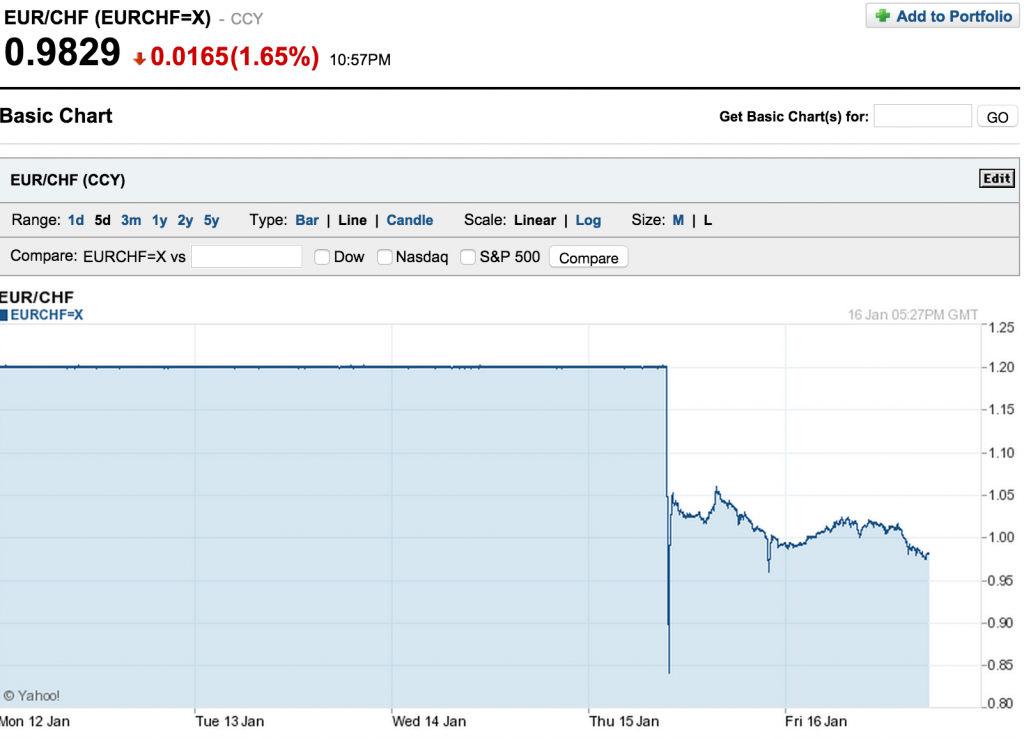Earlier today I had a short conversation on Twitter with financial markets guru Deepak Mohoni, one of whose claims to fame is that he coined the word “Sensex”. I was asking him of the rationale behind the markets going up 2% today and he said there was none.
@karthiks Happens every now and then. (Genuine reason).
— Deepak Mohoni (@deepakmohoni) August 14, 2015
While I’ve always “got it” that small movements in the stock market are basically noise, and even included in my lectures that it is futile to fine a “reason” behind every market behaviour (the worst being of the sort of “markets up 0.1% on global cues”), I had always considered a 2% intra-day move as a fairly significant move, and one that was unlikely to be “noise”.
In this context, Mohoni’s comment was fairly interesting. And then I realised that maybe I shouldn’t be looking at it as a 2% move (which is already one level superior to “Nifty up 162 points”), but put it in context of historical market returns. In other words, to understand whether this is indeed a spectacular move in the market, I should set it against earlier market moves of the same order of magnitude.
This is where it stops being a science and starts becoming an art. The first thing I did was to check the likelihood of a 2% upward move in the market this calendar year (a convenient look-back period). There has only been one such move this year – when the markets went up 2.6% on the 15th of January.
Then I looked back a longer period, all the way back to 2007. Suddenly, it seems like the likelihood of a 2% upward move in this time period is almost 8%! And from that perspective this move is no longer spectacular.
So maybe we should describe stock market moves as some kind of a probability, using a percentile? Something like “today’s stock market move was a top 1%ile event” or “today’s market move was between 55th and 60th percentile, going by this year’s data”?
The problem there, however, is that market behaviour is different at different points in time. For example, check out how the volatility of the Nifty (as defined by a 100-day trailing standard deviation) has varied in the last few years:
As you can see, markets nowadays are very different from markets in 2009, or even in 2013-14. A 2% move today might be spectacular, but the same move in 2013-14 may not have been! So comparing absolute returns is also not a right metric – it needs to be set in context of how markets are behaving. A good way to do that is to normalise returns by 100-day trailing volatility (defined by standard deviation) (I know we are assuming normality here).
The 100-day trailing SD as of today is 0.96%, so today’s 2% move, which initially appears spectacular is actually a “2 sigma event”. In January 2009, on the other hand, where volatility was about 3.3% , today’s move would have been a 0.6 sigma event!
Based on this, I’m coming up with a hierarchy for sophistication in dealing with market movements.
- Absolute movement : “Sensex up 300 points today”.
- Returns: “Sensex up 2% today”
- Percentile score of absolute return: “Sensex up 3%. It’s a 99 %ile movement”
- Percentile score of relative return: “Sensex up 2-sigma. Never moved 2-sigma in last 100 days”
What do you think?







